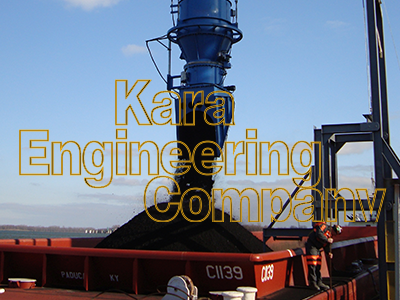
Our article titled Getting to Know Rotary Valves provides a comprehensive introduction to this device, this article will take a deeper look at rotary valves. In the following, we will see what a rotary valve is, how it works, what are its uses, and how to choose the right rotary valve for our project.
What is a rotary valve?
They are a type of valves that control and measure the flow of granular or powder bulk. The materials are entered into the valve through the funnel or other inputs and are managed with the help of the rotary valve, and then they are directed to the valve outlet in certain quantities.
Rotary valves are often used in air transfer systems to minimize pressure drop. They also have the ability to move dry to slightly sticky products, so they are used in the fields of chemical, food, pharmaceutical, plastic and other manufacturing industries
How rotary valves work
This device consists of 4 parts:
outer housing - rotor - bearing and sealing rotor – drive
The housing provides inlet and outlet valves as well as a safe passageway for materials from the valve. The rotor is kept in place by the bearing, and the material is transferred in the inner chamber of the valve with the help of the sealing of the bearing and the shaft. The drive mechanism is externally connected to the rotor shaft and provides the rotation speed and direction of the rotor.
The product enters the valve and is equally stuck between the blades of the rotor and is discharged with equal amounts at the outlet. The rotor blades have a suitable distance from the chamber and prevent the pressure drop and material retention in the valve.
Rotary valve gearbox
The torque force to rotate the shaft and blade of the rotary valve is provided by the variable speed gearbox. With the rotary valve variable speed gearbox, which is also called a variator and can be adjusted and controlled according to the volume of the incoming fluid, it reduces the speed of the gearbox in a certain range.
The size of the variable speed gearbox is determined according to the input power and fluid volume. Variable speed gearboxes that are coupled to the rotary valve are produced by well-known brands such as Motovario, SEW, Siemens, VEM, etc. Variable speed, long life and noiseless operation are the advantages of this type of gearmotor.
There is a very small gap of 0.2 to 0.5 mm between the body and the rotor, which at the same time creates an air lock and makes the rotor move better and smoother, and prevents the rotor from locking in the cylinder, which usually occurs when the cylinder state changes due to temperature changes. Did.
Types of enclosure or housing
Depending on the need, the housing can be linear or offset. In linear housing, the inlet valve is configured exactly above the outlet valve, which is more efficient and generally works in most applications.
Offset housing intentionally deviates the inlet valve from the outlet to avoid overfilling the product, but it is less efficient and more refined. There are different types of rotary design according to its purpose: closed-end rotors, open-end rotors, measuring rotors, spiral rotors, flex-tip rotors, and various other types, each of which is unique for materials and needs.
Types of drives
Most rotary valves are powered by a synchronous electric motor connected to a reduction gear and timing chain, which allows precise speed control and adjustment. Additional speed monitoring and variable speed control equipment can be added to these drives, turning rotary valves into efficient rotary automation valves.
You need to know what you are using the rotary valve for and what it is supposed to do. This means calculating the desired power, defining material characteristics (density, flow coefficients), estimating efficiency and other important criteria. So be prepared to change these specifications if necessary.
Working speed of rotary valve
Rotor speed will affect throughput, valve wear, valve size, etc. Knowing the proper rotary valve speed will help with efficiency and maintenance issues. In general, the speed of the rotor depends on items such as the type of rotor, the characteristics of the material and other things.
construction material
Choose a material for your valve that won't have a problem with the fluid. For example, the stainless steel rotary valve is resistant to moisture caused by the fluid and does not rust. Or the rotary tips that are made of bronze are not easily eroded and worn you should choose a material for your valves that can maintain the integrity of pressure and vacuum if necessary, and its lifespan is suitable for your project.
Nominal temperature and pressure
If the rotary valve is used in a pressure or vacuum system, make sure it is set for these conditions. Also, be sure to specify the working temperature of the environment and materials, by doing this, no part of the valve will be under heavy load. There are significant thermal effects between the rotor and the housing (especially at nominal speeds), Because the rotor generally reaches different speeds, which can cause leaks or unwanted repairs. Make sure the rotary valve you choose does not have these effects in your application and can control the heat.
When does your rotary valve need to be replaced?
One of the important issues in transmission systems is the wear life of rotating valves. The rotary valve airlock still works in the pneumatic conveying industry because it is usually the best device for measuring materials while creating an air seal by maintaining the pressure difference between its two sides.
Although these valves are not perfect in either function (metering or sealing), they are the best way to do two things at the same time.
The correct operation of this equipment is based on maintaining a small distance that can increase over time due to wear.
This question is often asked by customers, can we measure the wear of our rotary valve?
Our answer is: yes.
From a technical point of view, you can check the amount of wear in your valve by means of a filler. However, this method cannot be reliably determined as the determining factor for your valve, as rotary valves do not wear evenly, some wear on one side and not on the other.
It all depends on the type of valve, transmission material and working conditions, but you can prevent premature wear of your valves.
Three telltale signs that your rotary valve needs to be replaced:
If the rate of material transfer in your system has decreased.
If materials accumulate in transmission lines.
If the pressure goes up and down
Various causes of wear
Rotary valve wear often occurs in the body, end flanges, rotor, or seals. This happens because the product is drawn or trapped between surfaces. Air blowing has a sandblasting effect on internal surfaces. Blowing air basically means that the rotary valve is not meeting its designed feed rate and will most likely need to be replaced soon.
Rotary valve wear can occur in a short period of time, such as a month or a year, which changes depending on the wear of the product.
Reinforcement of rotary valves against wear
Manufacturers do a variety of things to make rotary valves more wear-resistant. Coating the inner surface of the body and end flanges and rotor edges with materials such as chrome, nickel, Teflon or tungsten carbide is one of these ways. This work can increase the life of rotary valve in different applications compared to basic valves by several percent.
Yet another way that is often overlooked by customers and builders alike is the design of the transmission system itself that feeds the valves. The biggest independent variable in wear is the pressure difference on the two sides of the valve.
To achieve better value in a system, manufacturers often design lines to operate at pressures of 10-12 psi on a smaller line while they can operate at 5-6 psi on a larger line. To better understand, imagine having three lanes instead of four for rush hour driving. Although this approach saves initial capital, it can cost you extra in the long run, considering the frequent replacement of the rotary valve, the cost and downtime.
 Translate
Translate


